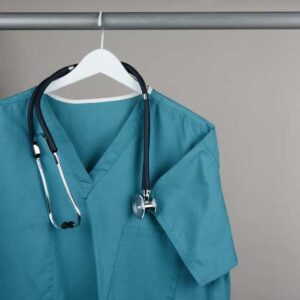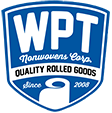
Today many people have benefited from “medical scrubs” but how many of those same people (whether patients or healthcare professionals) know, from a scientific perspective, how critically important scrubs have become in healthcare settings? Do they even know why we call them “scrubs?”
Well, the ever-expanding repertoire of sanitary items of clothing for medical settings we call “scrubs” were originally meant for surgeons. The word came from the fact that surgeons eventually (after they finally and reluctantly accepted the germ theory of disease) had to “scrub” themselves clean and get thoroughly sterilized. These uniforms were, in other words, items doctors wore in a “scrubbed” environment.
Originally made strictly in white, and then green, scrubs were eventually allowed to be of different colors. As better, more sanitary and, more importantly, disposable materials (e.g., nonwovens) became available, though, more emphasis was placed on protecting both patients and healthcare workers from the ubiquitous pathogens in healthcare settings.
The culminating focus was to minimize the possibility of contaminants and contagions negatively affecting health outcomes in medical facilities—the more efficiently this was done, the fewer infections took place, the better a chance for full recovery and the less likely that healthcare staff would contract infectious, communicable and contagious diseases.
To this day, the best made, most up-to-date medical scrubs being manufactured anywhere—i.e., the ones being made by WPT Nonwovens—can be described as being, provide or are capable of performing this function:
- Simplicity of design, providing minimal places for contaminants/microorganisms to hide
- Inexpensive to maintain or replace
- Easily washed
- Compliance with infection control/disease containment protocols, policies & laws
- Extraordinary protection for healthcare staff
- Dependable protection for patients & the public
- Means by which to differentiate between staff from different specialties, departments, skill sets, and ranks by assigning specific colors to each group
- A way to make patients more comfortable/at ease—i.e., such as by using cartoon figures imprinted scrubs in pediatric wings of hospitals
- The ability to make fashion statements while at the same time remain professional and compliant
- Disposable
- Controllably absorbent—if that’s what’s needed
- Anti-bacterial & anti-microbial
- Cushioning
- Can help identify bodily fluids (stool, blood, urine, vomit, saliva, etc.) & contaminants
- Can take harsh chemicals & heat when being washed (the non-disposable variety); not available from WPT
- Help protect one’s personal clothes from getting ruined
- Can help identify to the public who authorized medical personnel are
- Cost-effectiveness to healthcare facilities
- Can generally be equipped with handy pockets
- Filtering
- Flame retardant, if desired and so ordered
- Liquid repellent
- Resilient
- Soft on the skin
- Hypoallergenic, if desired and so ordered
- Can help maintain a sense of professionalism
- Can help create camaraderie and team spirit (along the lines of formal “uniforms”)
- Sterile
- Relatively strong
- Non-tearing
- Stretchable
- Fully washable, as needed
- Can help discourage staff from wearing controversial or risqué personal outfits that lack professionalism and may be the source of unnecessary conflict
- Eliminate the eye-strain from the inescapable, blinding whiteness of former uniforms (now replaced with multicolored clothing)
- Comfortableness and great facility at putting on and taking off
- Anti-viral qualities, per special specifications and material configurations
- Compared to former times at healthcare facilities, more soothing and calming effect for patients (in contrast to those white uniforms)
- Easier to keep clean (than traditional materials scrubs)
- Like pajamas, can more easily conform to different body shapes and sizes
- A two-piece outfit configuration that is easily interchanged, selected & replaced
- Ease of movement & impeccable flexibility—this is especially valuable for ER, critical care, intensive unit, and preemie ward personnel who often have to move quickly, decisively and efficiently
NEED NONWOVENS FOR MEDICAL SCRUBS?
Nonwovens have revitalized, if not revolutionized, the medical scrubs establishment and WPT is here to make sure that your facility or practice keeps on benefiting from the on-going improvements, new developments and additions being made to this far-reaching, still-evolving technology. Thanks to the versatility and adaptability of nonwovens, medical scrubs thus far have been taken to previously only-dreamed-of echelons of quality and superlative usefulness.
On a more practical level, they have made it possible to create medical scrubs that are super-affordable, subservient to specific requirements/specifications and, to boot, capable of being made in new exciting, awe-inspiring colors, styles, fabrics and designs.
Tell WPT what you need, how many you need, and by when, and we’ll take it from there.
